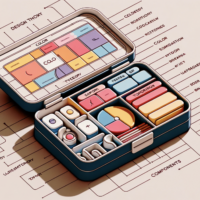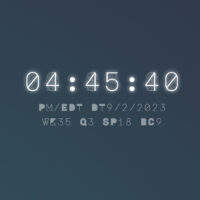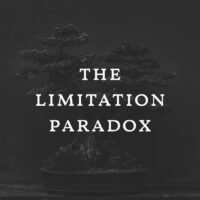
Creating a Logo is far from easy. We will look at my process of creating a logo and all the ancillary processes that can make your next logo project an amazing one. This will be a series of blog posts in realtime as the process proceeds through out all the phases of the project with client permission.
Here are things you need:
- An Amazing Client (Check)
- Experience in Art, Design, Naming (Check)
- Sketch Pad, Pencils, Brush Pens (Check)
- Software like Adobe Photoshop and Adobe Illustrator (Check)
The Client
Clients come and go. Most clients stick around if you are doing a good job for them though. The most important thing to remember in Logo design is understanding that the creative process is a two way road and the client’s vision must be communicated. At times this can be hard when a client is basing their vision on something not reflective of their real value.
You must tread a fine line as a hired expert between giving and taking ideas. You need client feedback, but you don’t want them to create something that would, in the end, not benefit them. And other clients merely want to use you as a human pen and that’s ok. It’s their money. The kind of client we are talking about here trusts you. So trust them too.
The Creative
There are many B school grads that will describe logo design and all it’s ancillary processes as something having little to do with a company’s real success. Ask NIKE about design. I am from the design side of the business world with over 20 years of design experience. I can tell you the real difference from one campaign to the next, from one website to the next is infact the creative.
Creative is the variable that can make a business or any endeavor stand out. I never met a CEO that didn’t love beauty despite their thoughts on creative. What some execs don’t like is not being in control. In the context of web design the creative or design means how something works not just how it looks. Good design is how something works too.
It’s important to note that humanity loves beautiful things whether it be people, places, or things. Beautiful things aren’t just for the wealthy anymore, it’s democratized for all of us now. Beauty sells. Why? Because we are attracted to beauty from our human core. The creative must be beautiful and different and thats what sells.
Start by Knowing Your Client
The process of creating a logo can be anywhere on the spectrum depending on how much the client trusts you. One must always start with trust and cultivate trust everyday.
Research the client, the audience and use your sketch book. nothing should be on the computer yet. Understand the basics. What’s their favorite color? You are there to create something beautiful for them that was never there before. Know their business value, because that is the nucleus of this project.
Knowing the client is the start to any good creative. Talk to your client. Get to know their tastes and their ideas. Push yourself to understand their needs and their wants. Be able to understand the difference. Iterate and let it flow like a river. You can’t control a river just guide it.
The Starting Point
- The Client: Essential Oils Company
- Deliverables: Naming, Logo, Web Design
- Note: The client has given us permission to use the process for this case study (of sorts).
Naming
The Client in this example has no name yet. The purpose of the company is to “spread the joy of essential oils”. The idea is to have a feminine strong value. The difference is how they do things and their personal touch. So they have products derived from the earth, feminine design, personal touch. Naming starts from what they are.
So the process of naming is like art and science. It’s very hard for clients to understand the process of naming and how very important it is. Encouraging the client to start with naming is one of the hardest parts of what a designer can do. As well it is a huge responsibility not to be taken lightly. A designer (going beyond design) to create a name that best represents the client in a marketplace is not for the faint of heart.
This is not literal design, but more like idea design. The purpose of naming is to instill the essence of the companies vision into very few words or a word.
While Joily was the name chosen it was the very last created of the set that began on a sketch pad iteration by iteration. In this context being that there is going to be a website there was limitations to what name could be used and not used depending on domain availability. Fortunately for the client Joily.net and Joily.com were available and purchased.
The Goods:
- The Final names: Joily, Oils A-to-Z, Absolute Oils.
- Name choice: Joily.com
- Tagline: The Joy of Essential Oils.
Start Sketching
Like a good photographer has a camera at all times, you should have your sketch book. Many cannot draw. It should not be misunderstood that a designer despite not being able to draw can create a beautiful logo, but just like in an example of an athlete the more versatile someone is the better. Use your sketch book and hon your craft.
Have a sketch book always. Anytime you begin a project start in a sketchbook and not on a computer. Put in the hours on the sketchbook and everyone especially your client will benefit. It’s like building a strong foundation on paper as opposed to slapping some vectors together. Sometimes time is of the essence, but in this example put your time in your sketch book not on the computer.
95% of all design is typography. The typography needed here is more script and less gotham. Here are some of the final sketches. As you can see having the ability to draw starts the creative process and in turn delivers a much richer product for the client.




